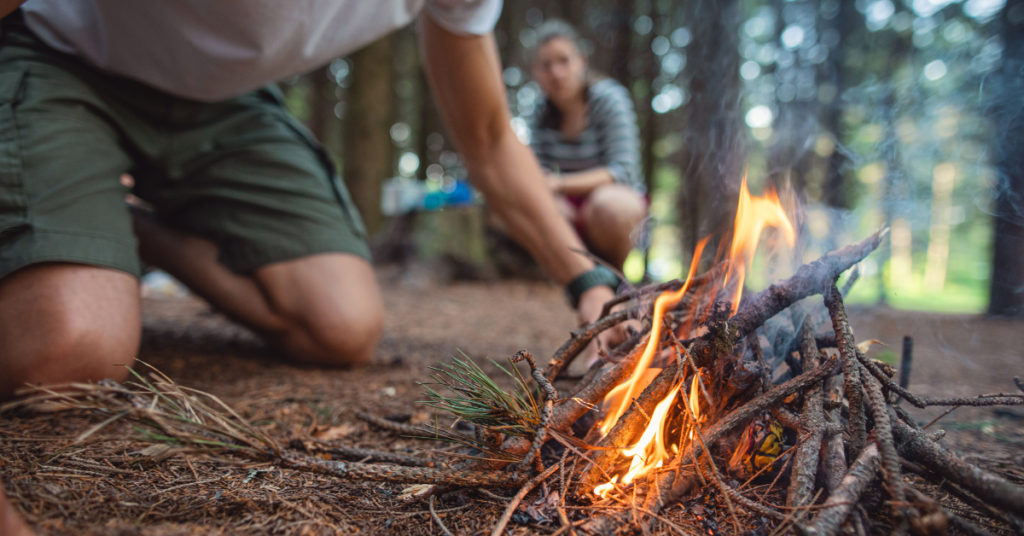In a world where anything can happen, it’s essential to be prepared for the worst with basic survival skills.
In the blink of an eye, life can take an unexpected turn and thrust us into the depths of uncertainty. Whether it be a sudden natural disaster, a medical emergency, or finding ourselves in an unfamiliar and treacherous environment, the ability to navigate these unforeseen circumstances can mean the difference between life and death. With no survival knowledge to rely on, you will become another tragic statistic.
Let me tell you about a time when I was caught in a sudden storm in the highlands. This experience taught me the importance of always being prepared and how to quickly adapt to changing conditions, a lesson I’ll pass on to you in this article.
Why Are Basic Survival Skills Important?
To survive in the event of a crisis, having fundamental survival skills is absolutely essential.
You never anticipate becoming lost or losing your way while out in nature; however, if it does happen, these life-saving techniques can help you stay alive for a longer period of time.
While most scenarios could last more than several days, familiarizing yourself with some basic survival methods will give you an advantage during those trying times.
“Owning the best gear in the world won’t matter if you lack the skills and ability to use it. In a survival situation, your most valuable assets are your mind and physical capabilities,” – prepping expert Eric Seitz of the Pioneer Survival Company told SafeBlackout.
#1 – Finding Water in a Survival Situation
Accessing clean water is one of the most useful survival skills you should not be overlook. Knowing how to find and purify your water can mean life or death in an emergency situation.
Being able to pinpoint sources of accessible water, understand the process of filtering it, and devise creative ways of carrying it are all crucial elements of survival. [1]
A person can survive, on average, for about three days without drinking water.
Where You Can Find Water
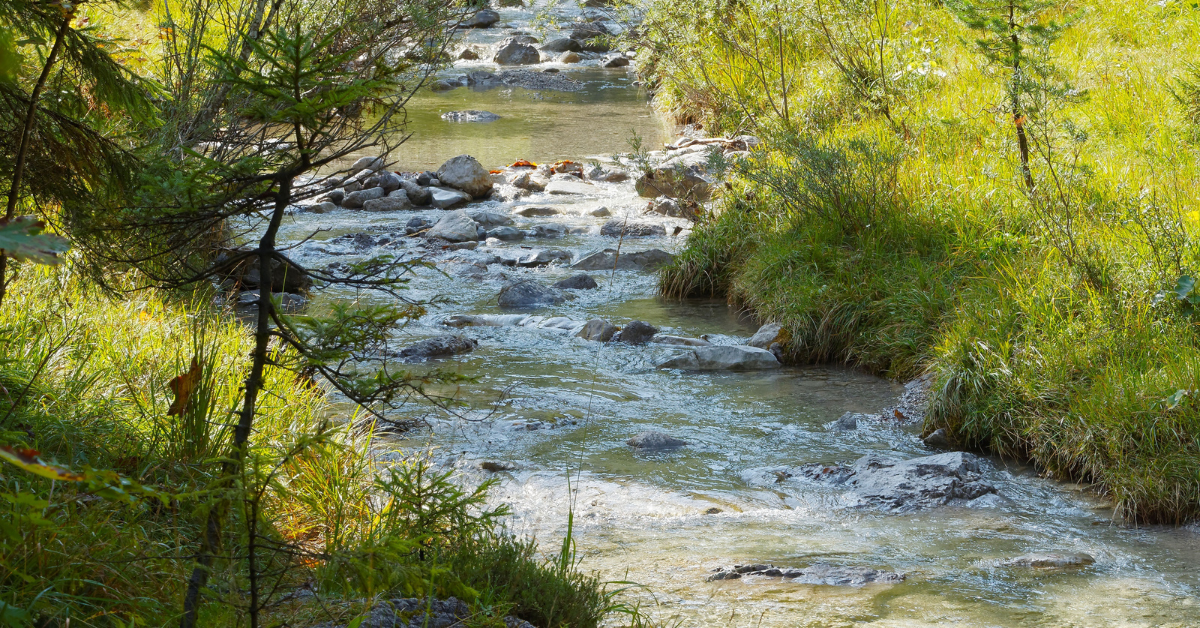
If you find yourself in the wilderness, there are a few places where you can find water. First, look for sources such as creeks and rivers. These are usually easily identified by their sound or the presence of birds and animals that come to drink from them. You can also find water in lakes, ponds, and swamps, which are usually contaminated. This water should only be consumed when purified correctly.[2]
In addition, another excellent method for finding water outdoors is to locate plants covered with dewdrops or close to a source of moisture. By boiling these drops, you can make them suitable for consumption.
#2 – Ways to Purifying Water
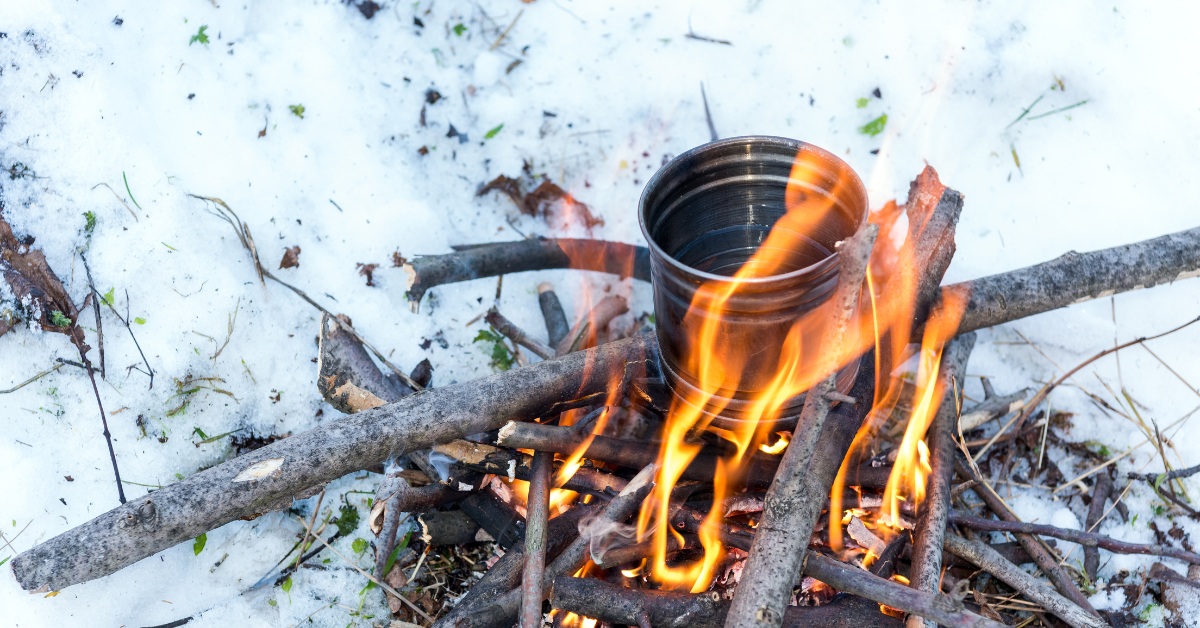
Once you’ve acquired your water source, there are several tried and true methods for ensuring that it is free from contaminants and safe to consume.
Disinfection with Chlorine
Chlorine is a powerful disinfectant that can be used to purify water. It is an effective way to make sure that the water you are drinking is safe and free from harmful bacteria and viruses.
Boiling
Boiling water for three minutes is the easiest and most common method of purifying it and making it safe to drink. Once boiling is complete, let the water cool before consuming.
Filtering
You will need a filter, such as a cloth or a coffee filter, and a container to filter water.
First, pour the water into the container and then place the filter over the top of the container.
The water will slowly pass through the filter, trapping any dirt or debris in the process.
Once all the water has passed through the filter, it is safe to drink.
#3 – First Aid
Drawing from my experiences as a paramedic, including a time when I successfully revived a man in a dire situation, I’ll impart to you the essential first aid skills critical in emergency scenarios. These techniques are more than theoretical for me; they’ve been rigorously honed and tested in real-life, time-sensitive situations.
1. Prepping for the Journey
Before embarking on your camping adventure, it’s paramount to arm yourself with first aid knowledge. Consider enrolling in a first-aid class to learn how to handle injuries and illnesses in wilderness settings. Your preparation should encompass mastering techniques such as the accurate application of tourniquets, wound dressing, and setting fractures. The aim is always to be prepared for the worst-case scenario.
2. The STOP Method in First Aid
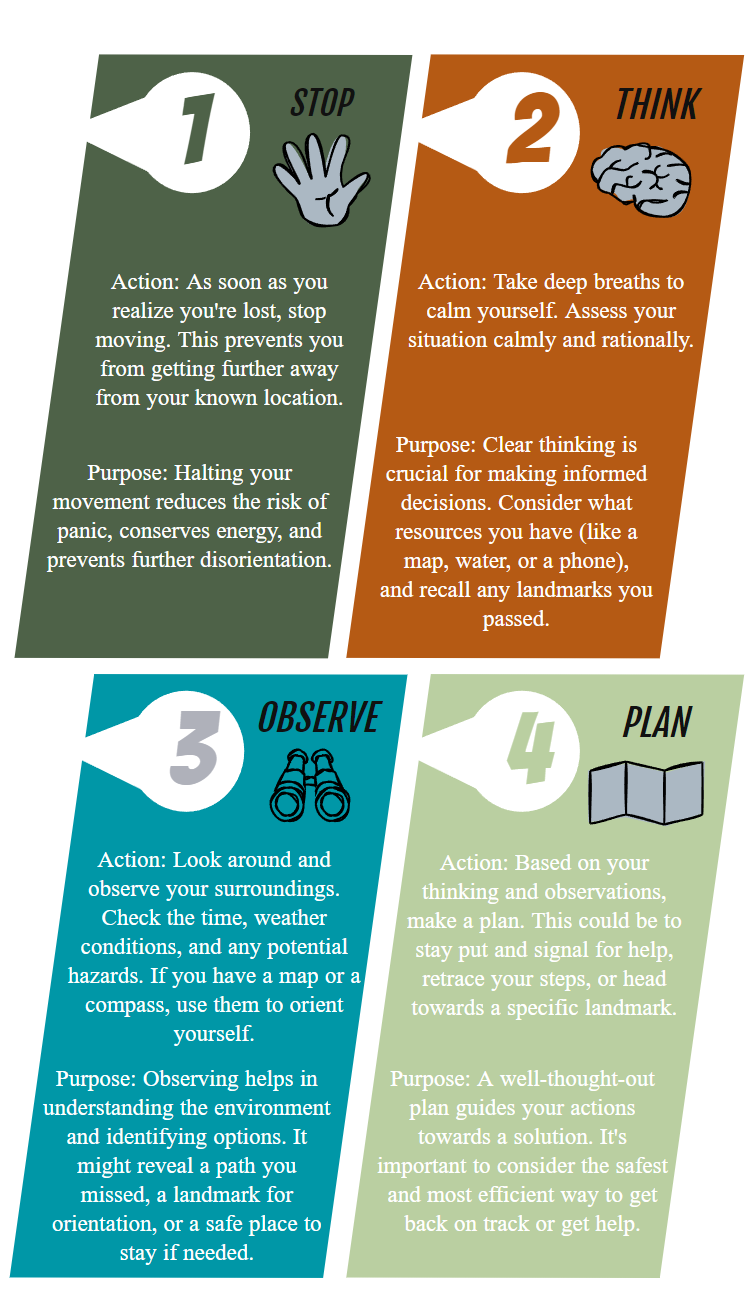
In survival situations, the STOP method – Sit, Think, Observe, and Plan – is an invaluable strategy. It underscores the importance of maintaining a level-headed and rational mindset. If you find yourself lost or stranded, your first step should be to evaluate your situation and make informed decisions calmly. This mental discipline is just as paramount as the physical aspect of first aid.
Example Plan:
- Decide to stay put because it’s getting late and you’re not sure of the direction.
- Use your whistle to signal for help every few minutes.
- Stay warm and dry by finding shelter and using extra clothing or a rain jacket.
- Conserve your phone battery but send a text with your last known location to a friend or emergency services if possible.
- Remain visible by staying in an open area and preparing a signal like a brightly colored item or a flashlight for when it gets dark.
3. Customized Medical Kit
Every camper should possess a personal medical kit, tailored to their specific needs. This kit should contain items for treating minor injuries like scrapes and bruises, along with any personal medication. It’s crucial to familiarize yourself with your kit’s contents and how to utilize them effectively. Avoid the temptation to overpack; focus on the essentials for your survival.
4. Hypothermia Prevention
A frequent and perilous threat in survival situations is hypothermia. To prevent this, ensure you have proper insulation, such as a space blanket at your disposal. Maintaining warmth is a fundamental aspect of wilderness first aid.
5. Psychological First Aid
Carrying a personal item, like a cherished family photograph, can serve as a potent reminder of your reasons to stay calm and focused on survival. This psychological aspect of first aid, while often overlooked, is integral in maintaining the will to survive.
6. Wound Management
While a comprehensive understanding of first aid is ideal, honing your skills in wound management can be especially beneficial. Comprehending how to treat a variety of wounds, from minor cuts to more severe injuries, is an indispensable skill for survival camping. This knowledge acts as your gateway to broader first aid expertise.
#4 – Gathering Food
Aside from finding water, another one of the most important survival skills, knowing how to gather food in an emergency situation.
There are various methods for sourcing the protein and nutrients you need to stay healthy while out in nature.
Fishing and hunting animals and birds will provide quality sources of protein. Wild plants can also provide bountiful nutrients to help you from starving during a disaster scenario.
Foraging
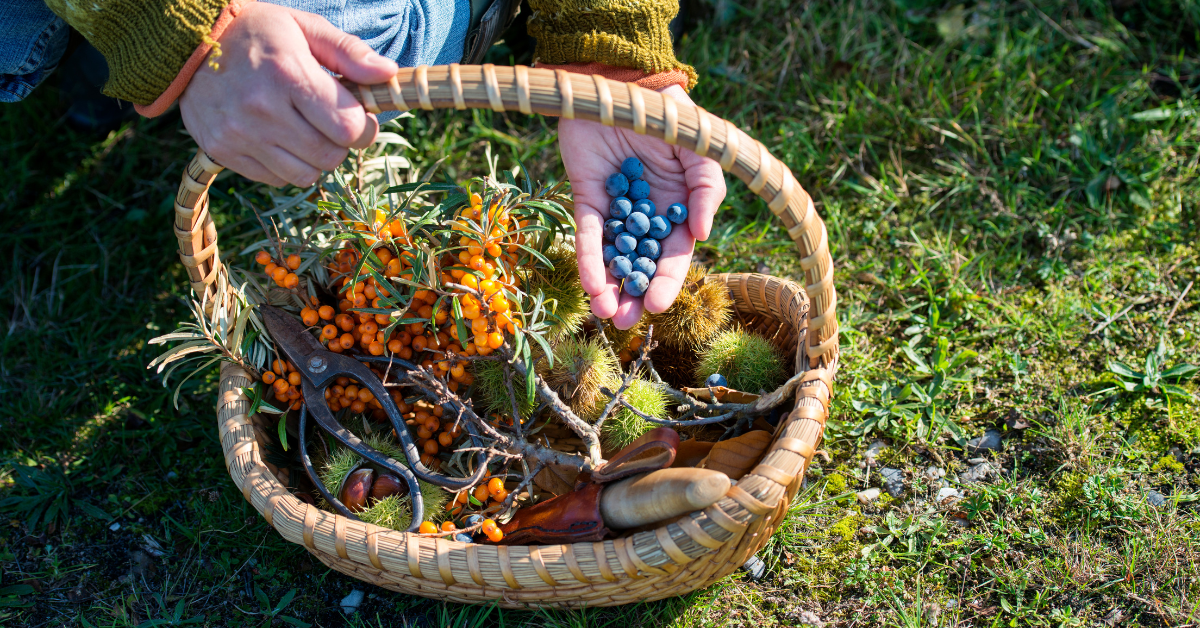
Foraging plants and fruits can bring much-needed vitamins, minerals, and fiber into your diet. Being able to positively identify wild edible and medical plants is also a powerful survival skill to possess.
When foraging for food in the wild, keeping safety and sustainability in mind is essential. Remember to harvest responsibly and take just what you need – only enough for one meal. Forage in areas that will have the resources to replenish themselves naturally in the future so they remain viable for years to come.
Hunting & Trapping
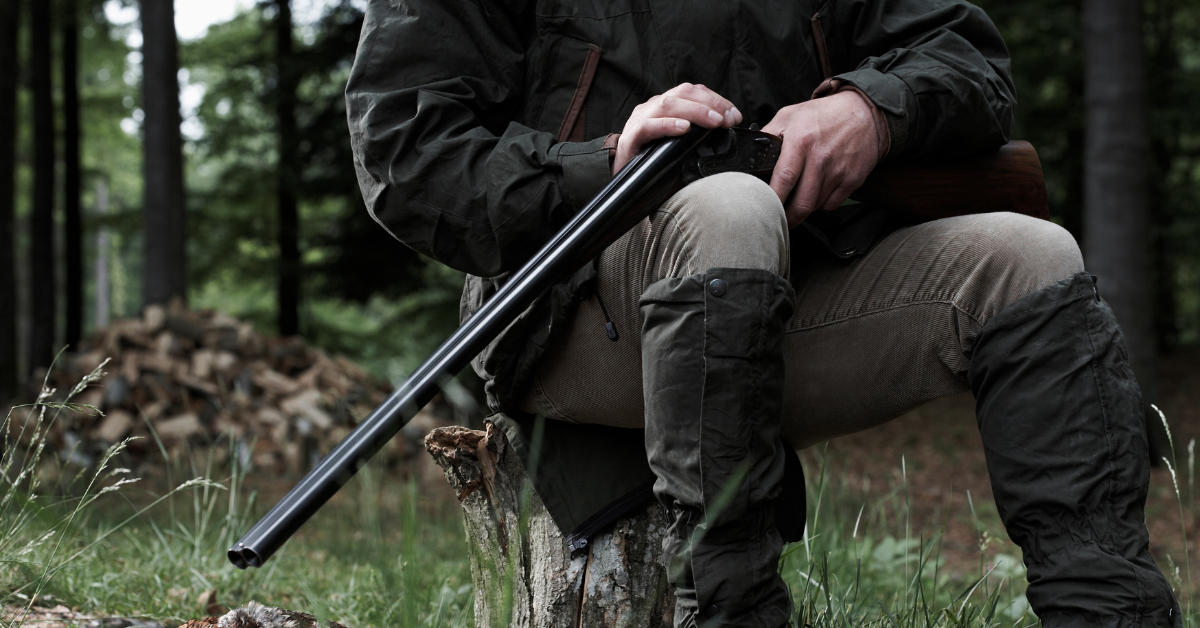
When hunting or trapping for survival, you must be aware of local laws before attempting either of these activities.
If your area permits such acts, you’ll need to understand the basics of hunting and trapping as they apply to a given situation. [3]
Depending on where you are, different animals may require special consideration regarding safety and humane treatment. Make sure you are familiar with all pertinent regulations to keep everyone involved safe.
Fishing
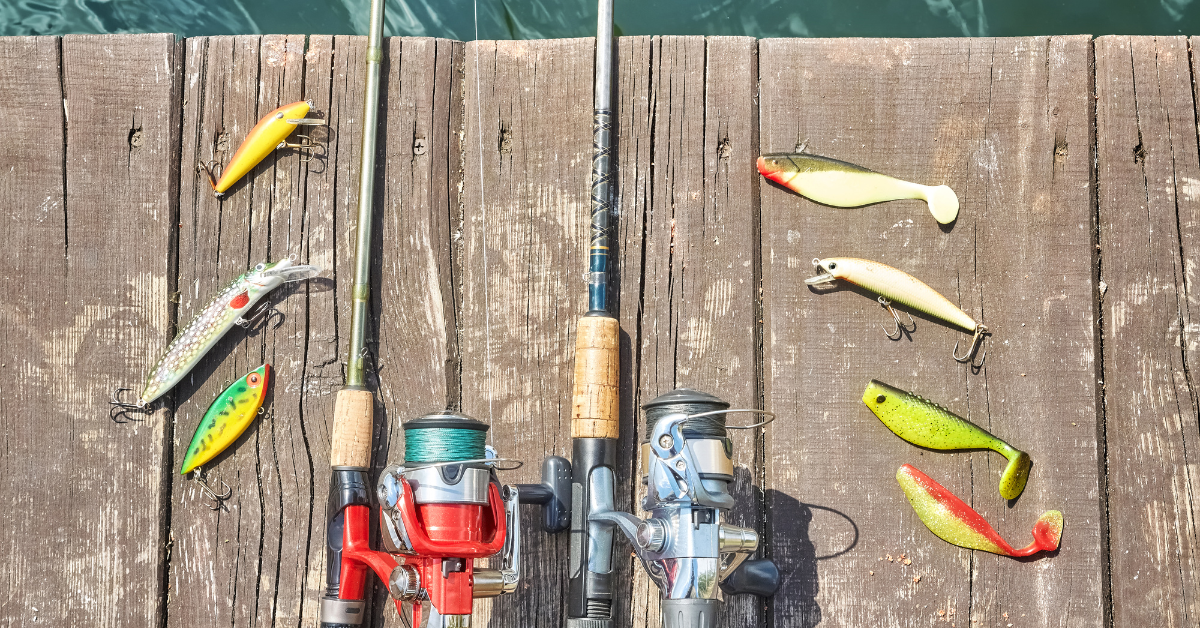
Fishing is a great way to ensure your survival. When you know how to fish correctly, you can get immensely rewarded—using the proper techniques and tools.
If the fishing environment allows fishing rods, try to build one if possible; fishing hooks or spears are also effective ways to catch fish in an emergency. [4]
Other fruitful methods include fishing with traps and nets, fishing with your hands, or fishing in shallow waters.
#5 – Starting a Fire From Scratch
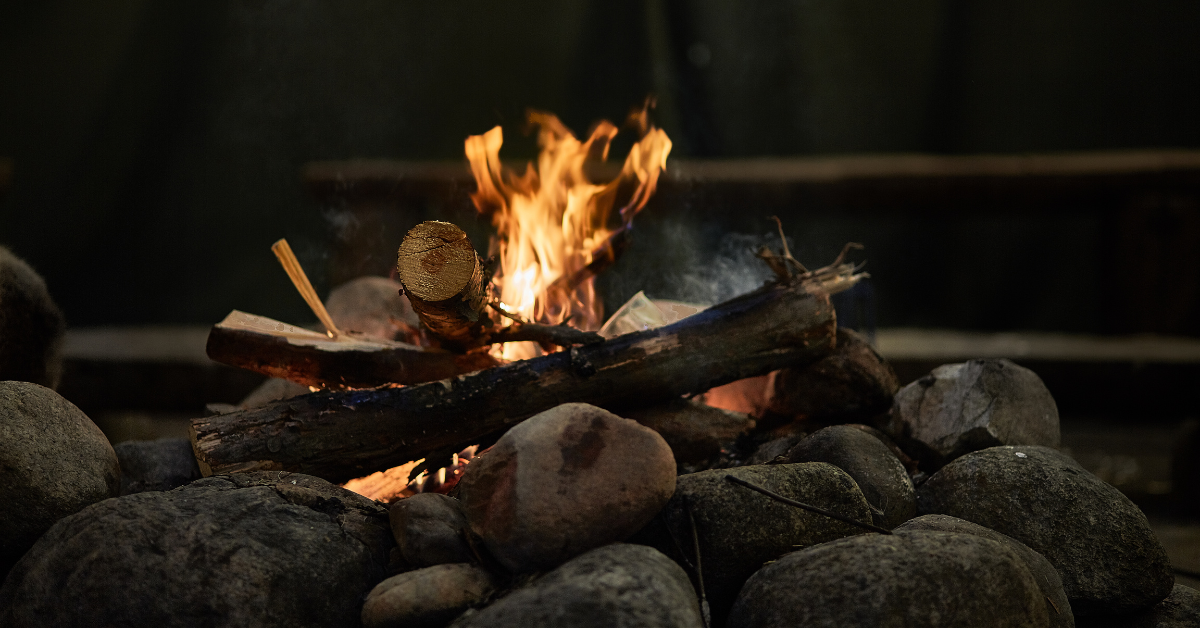
Knowing how to start a fire is one of the most important survival techniques. Whether you need warmth, protection, or the ability to signal others of your presence. [5]
Fire helps provide heat and protection from wild animals; signals aircraft and other people in need; sterilize tools; boils water; improves morale; etc.
Fire can be used under many different circumstances and can prove much more valuable than expected when seen through the eyes of an explorer or wilderness survivor.
In summary, the ultimate survival skill is learning how to start a fire under challenging conditions.
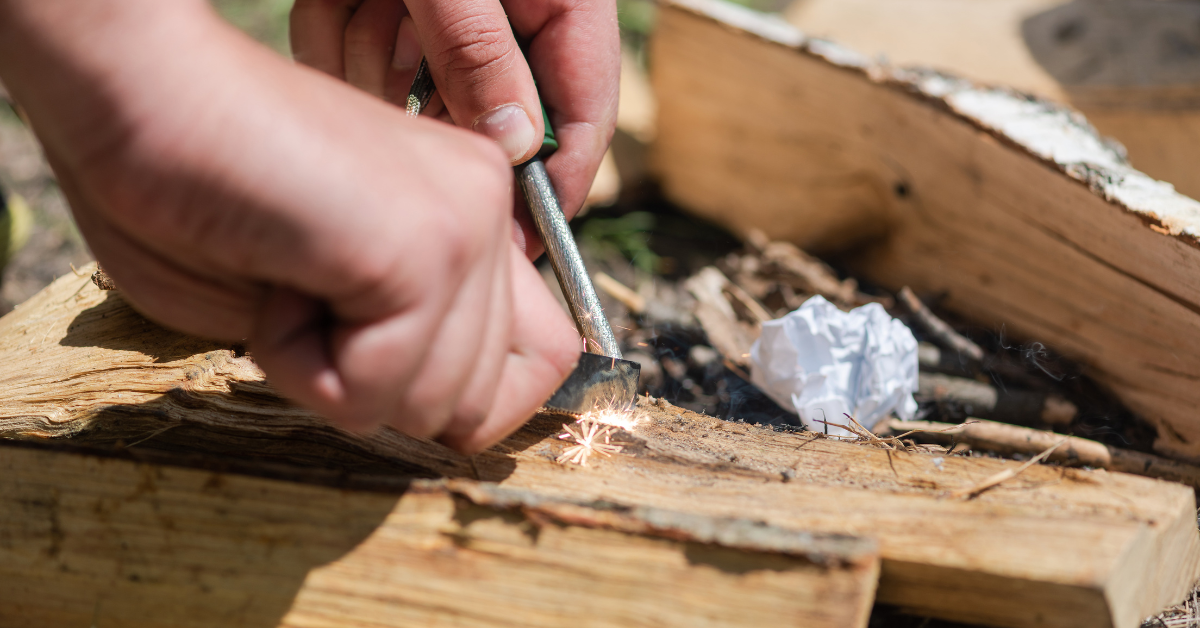
There are multiple ways to create a spark without lighter and matches:
- By rubbing the right stones together at high speed and with enough pressure, a spark can be created to light a fire.
- The bow drill method is an ancient technique used to create a spark. It involves drilling a hole and rubbing the spinning bit against the dry surface to generate friction, producing a spark that can be used to light combustible substances.
- Flint and steel is a classic way to create a spark without lighter and matches. It is an age-old technique that has been used for centuries to start fires. The process involves striking a piece of flint against a piece of steel, generating sparks. The sparks then ignite tinder, such as dry grass or leaves.
After you ignite your fuel materials, you must keep the flame alive. Metaphorically speaking, it is like taking care of a baby – feed it slowly and carefully so that it will stay burning steadily.
#6 – Shelter Up, Survive Out
Recall the story I shared earlier about being caught in a storm while in the woods? It wasn’t just an anecdote; it was a pivotal lesson in preparedness.
Always Be Prepared!
This experience taught me the critical importance of always being ready for the unexpected. It’s a lesson that goes beyond mere storytelling; it’s a fundamental principle of survival.
Building a shelter is an essential survival skill that can ensure your survival in survival situations, which i learned too late!
When constructing a shelter, it is essential to consider potential dangers, such as predators and environmental changes. Planning for these threats will ensure that the shelter is secure and well-built, providing safety for those inside. [6]
Natural shelters can be used as long as there are minimal risks of danger or exposure. Still, often intermediate and man-made structures offer better protection.
A-Frame Tarp
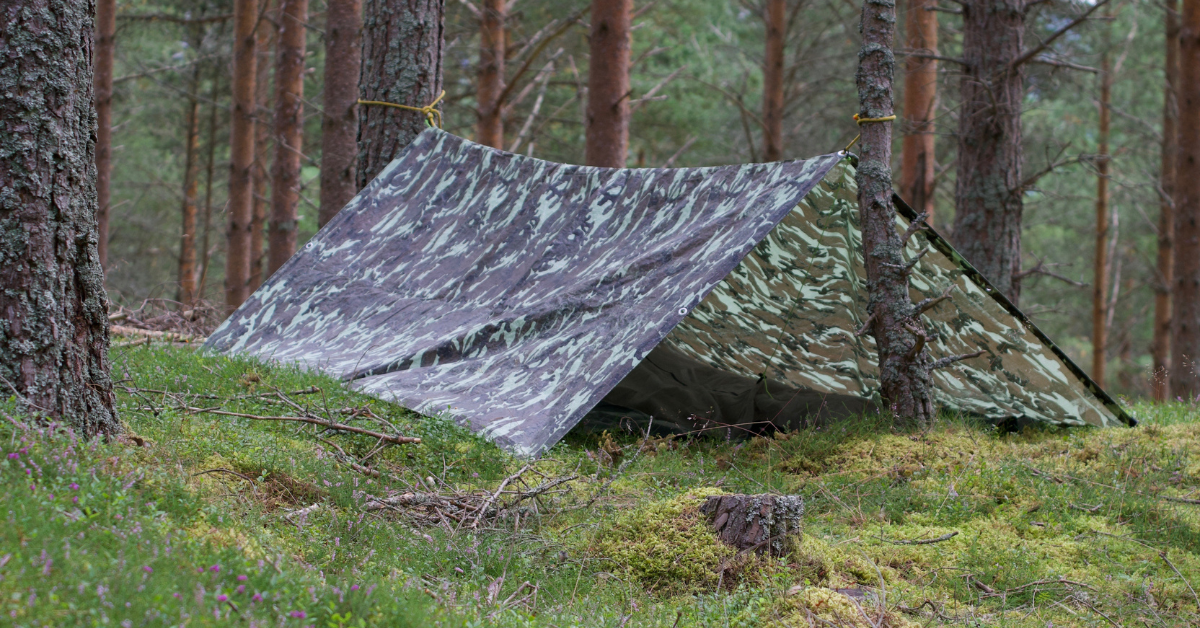
This type of survival shelter can be easily constructed with minimal equipment.
It is a shelter formed by tying a paracord ridgeline between two trees and throwing the tarp over it. This type of shelter protects from wind, rain, and snow while allowing for ventilation and some visibility. It can be used in emergency and recreational situations when you need to set up a temporary shelter quickly.
Wicki-Up
This simple yet effective structure, made from a tripod of branches and covered with leaves and other natural materials to create a thermal shield, is the ideal shelter for cold weather. It is lightweight and easy to construct, offering excellent protection from the elements.
Garner step-by-step knowldege about building Survival Shelters by clicking here.
Shelters can also be designed with appropriate insulation to keep you warmer or encourage airflow. At the same time, it keeps you out of the elements, which may otherwise be hazardous.
When building any shelter, consider the environment, including stakes and ropes, to prepare for hazards and ensure that any manufactured structure offers optimal safety.
#7 – Tying Knots
Tying knots is a valuable and essential survival skill. It can be used to secure items, build shelters, and even save lives. Knots are necessary for outdoor activities like camping, fishing, and hunting.
Knots can also be used in everyday tasks, such as securing a bundle of items together. Knowing how to tie various types of knots is an invaluable skill everyone should learn to be prepared for any situation.
Out of the many knots that exist, three particular ones are invaluable for survival:
Bowline Knot
It is a simple knot that can be used to secure a rope around an object or person, making it ideal for camping, sailing, and other outdoor activities. The bowline knot is easy to tie and untie even when under tension, making it an excellent choice for securing something quickly.
Its primary disadvantage is that it can slip if the rope is wet or there’s too much tension on the line. However, the bowline knot will keep its grip in most conditions with proper maintenance and care.
Half Hitch Knot
It is a versatile knot that can be used to secure items, tie two ropes together, or even as part of a larger knot. The Half Hitch Knot is easy to learn and remember.
Its main pro is its simplicity; however, its main con is that it can be difficult to untie once it has been tied tightly.
With some practice, the Half Hitch Knot can become an invaluable tool in any outdoor activity or emergency.
Square Knot
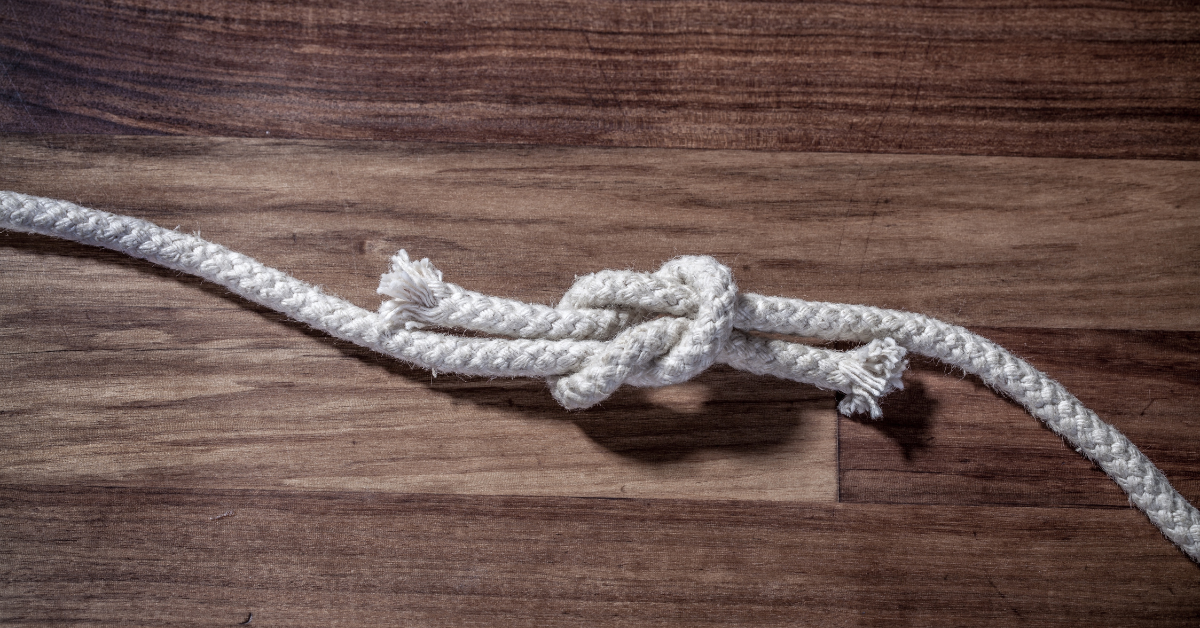
Used to tie two ropes together, secure items to a rope, or even build a shelter. It is also helpful in tying off bandages or other medical purposes.
#8 – Navigation & Orienteering Techniques to Find Your Way

Navigating is a necessary skill when one is lost in the wild. Knowing the proper techniques can help one find their way back to safety while also helping to locate essential resources, such as water sources and more. It is a must-have skill for anyone looking to survive in such scenarios.
Maps
Maps have been an essential part of navigation for hundreds of years. They make it easy to lay out and plan a safe route while showing important information like terrain and resources such as water, food, and shelter. This invaluable tool can save lives and make your survival much easier.
Sun
You can use the sun’s position in the sky to orient yourself. To do this, becoming familiar with the cardinal directions (north, south, east, and west) is crucial. [7]
With some practice, you can navigate with just the sun as your guide.
In the Northern Hemisphere, the sun follows a predictable pattern; it rises in the east and sets in the west, spending most of its time in the south. Conversely, the Southern Hemisphere experiences a different sequence, with sunrise and sunset positions swapped.
It would be best if you were well-versed in the basics of navigation. In any kind of critical situation, you need to be confident and able to figure out a way back home or call for help without any problems. Whatever method you choose, you must be familiar with it.
Mind Preparedness For Emergencies
Emergencies can happen anywhere and anytime, and being prepared is key to ensuring your safety.
Having a plan of action in mind when an emergency arises is essential, as well as keeping calm and having the ability to think quickly and clearly during stressful times.
It is also essential to fully understand the environment you are in and any potential dangers it may present.
Making sure to know your surroundings, like having an idea of the terrain and landscape, can help you create an achievable plan of action when emergencies occur.
Finally, having kits prepared with essential supplies and items can provide the necessary resources to help you survive any situation.
Mind preparedness for emergencies is a vital survival skill that can make the difference between life and death. Taking the time to familiarize yourself with essential survival skills, like building a shelter, tying knots, or navigation when lost.
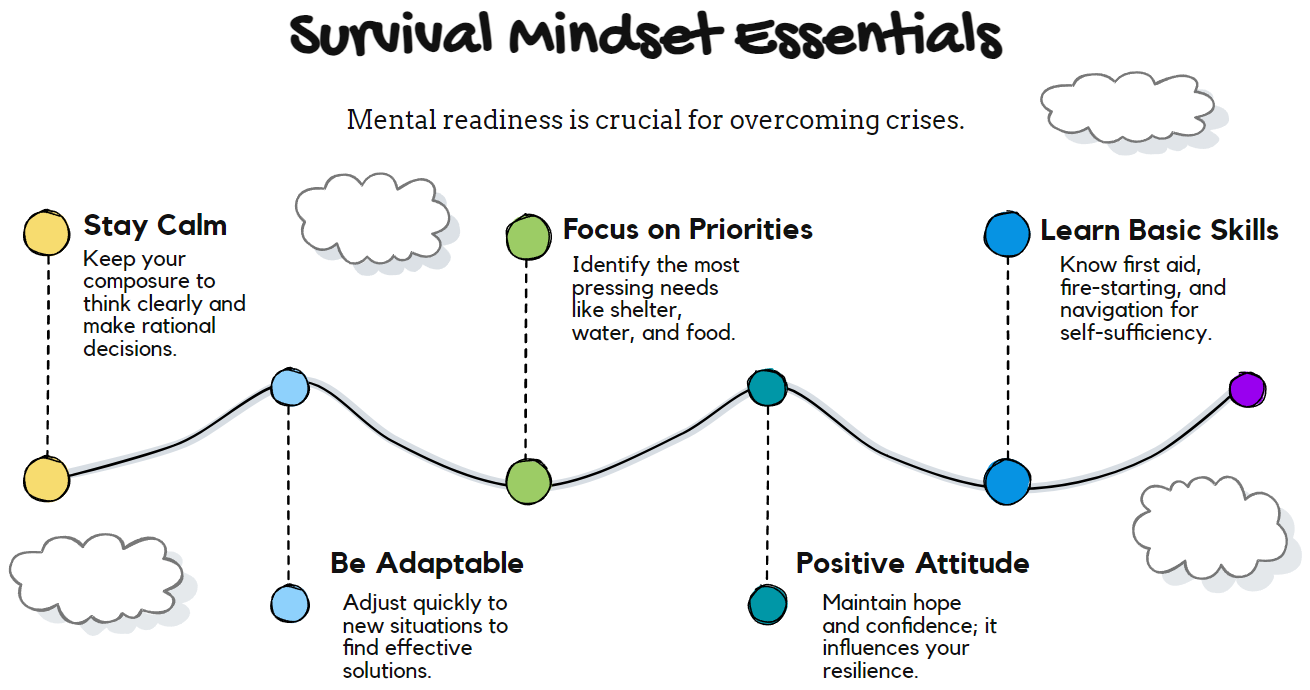
Important Survival Items
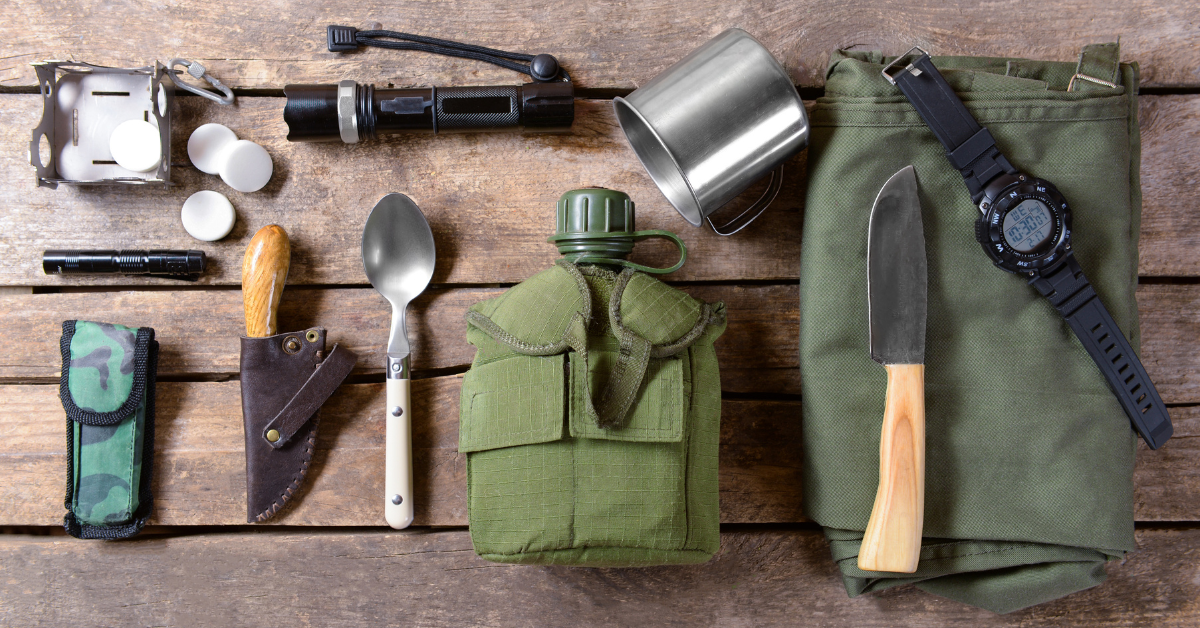
In any outdoor situation, safety should always be your top priority. Whether you are camping with your family, hiking in the wilderness, or simply exploring the great outdoors, it is essential to be prepared for any potential dangers. These items can help you stay safe and secure in any situation.
First Aid Kit
In an emergency, a basic first aid kit is invaluable. Not only can it help you to deal with minor cuts and scrapes, but it can also prevent more severe problems from occurring. A first aid kit should be an essential part of your arsenal when you are away from home.
A first aid kit can help reduce the risk of infection, provide pain relief, and help stabilize a person until professional medical help is available.
Water Purification Tablet
Water purification tablets are essential for any survival kit, as they are necessary for transforming hazardous water into a safe drinking supply. These tablets can eliminate bacteria, viruses, and other harmful contaminants from the water, which, if consumed, could cause severe illnesses.
Flashlight and Extra Batteries
Flashlights are essential for survival; they provide light in the darkness and help you find your way in unfamiliar places, locate crucial resources, and signal for assistance. Furthermore, they can be used as a defensive tool and to scare away animals.
Remember the extra batteries!
Multi-Tool
Multi-tools are a must-have for any survival kit due to their versatile nature. They come with various features such as cutting, sawing, hammering, and screwing – all in one.
Plus, they’re lightweight and portable, so you can easily take them wherever you go.
Firestarter and Matches
Fire starters and matches are essential in emergencies since they provide a convenient and easy way to get a flame going. Furthermore, they are indispensable when you need to start a fire in wet or windy conditions, making them superior to other methods.
Navigation Tools
Navigation tools such as compasses, maps, and GPS are necessary for survival situations because they provide a way to orient oneself and find one’s way back to safety.
Compasses provide a way to determine direction.
Maps offer a way to identify landmarks and terrain features.
GPS provides a way to pinpoint one’s exact location.
All of these tools can be used together to help someone find their way out of a dangerous situation.
Signaling Device
Whistles, mirrors, and flares are essential in survival situations, as they can attract attention and alert rescuers of one’s location.
Whistles can be heard from a great distance, while mirrors and flares can be seen from a great distance.
These devices can help you signal for help when you are in a remote area or in an emergency.
Emergency Shelter Building
Just having the skill to build a shelter isn’t enough; you need the right tools to maximize its potential.
They can be lifelines for those affected by natural disasters or other unexpected events.
Tents are an effective, easy-to-set-up, and cost-efficient solution to provide temporary shelter and safety.
They can be used to protect people from the elements and offer a secure place to rest and recuperate during times of emergency.
Tents are also durable enough to withstand harsh weather conditions and can easily be moved if necessary.
When there’s no tent at hand, making a shelter from scratch is a great way to ensure your safety during an emergency.
1. A sturdy tarp or other waterproof material
2. Rope or cordage to secure the tarp
3. Poles, sticks, or logs to support the tarp
4. Natural materials such as leaves, grass, and pine needles for insulation
5. A shovel or other digging tool to create a foundation for the shelter
Last Tips for Basic Wilderness Survival Skills
- Always carry a signal mirror or whistle- these can help you get found in the event of an emergency
- Learn how to make fire by using only natural materials- this can be extremely helpful in an emergency
- Stay hydrated
Last Words
In our increasingly volatile world, the urgency to learn these basic survival skills has never been greater. Rapid climate change, increasing geopolitical tensions, and the rising frequency of natural disasters all underscore the need for individuals to be self-reliant and prepared. Rather than succumbing to a sense of helplessness, acquiring these skills empowers us to take charge of our lives and actively shape our destinies. It is a transformative journey that fosters a deep sense of confidence, self-sufficiency, and a renewed connection to the natural world.
